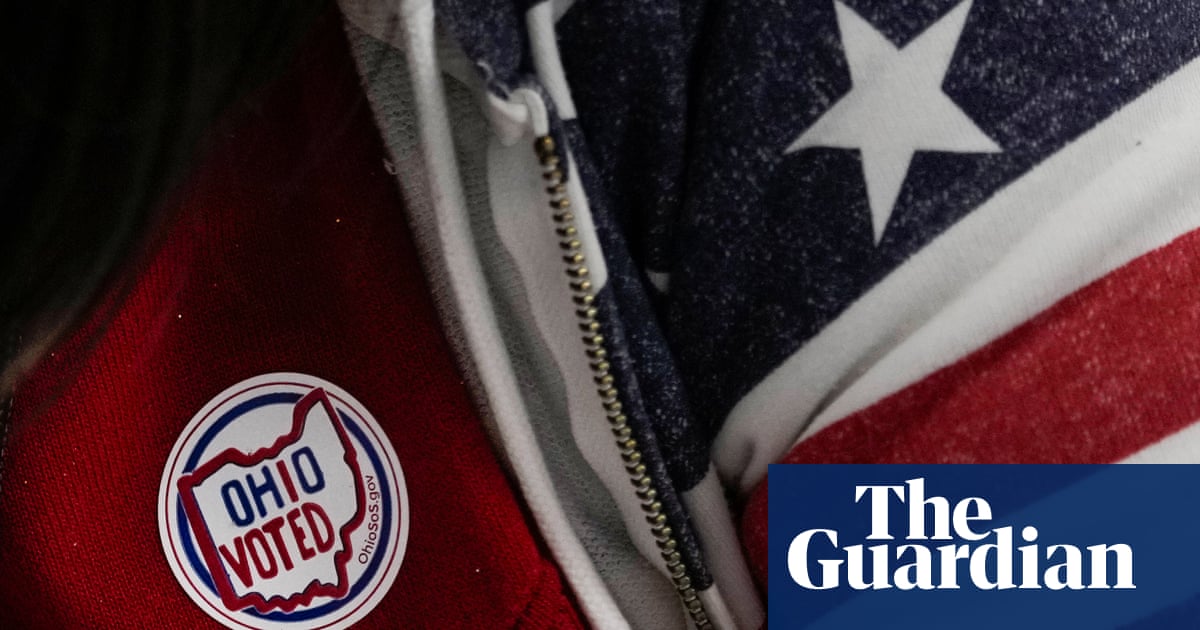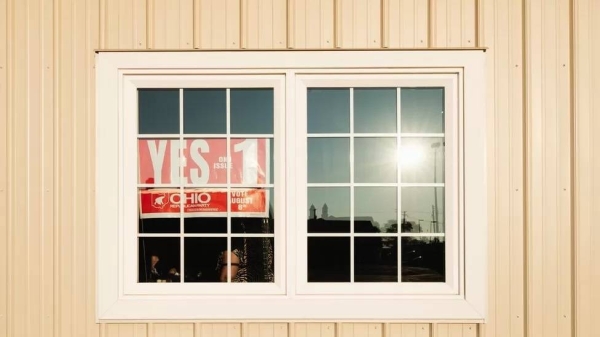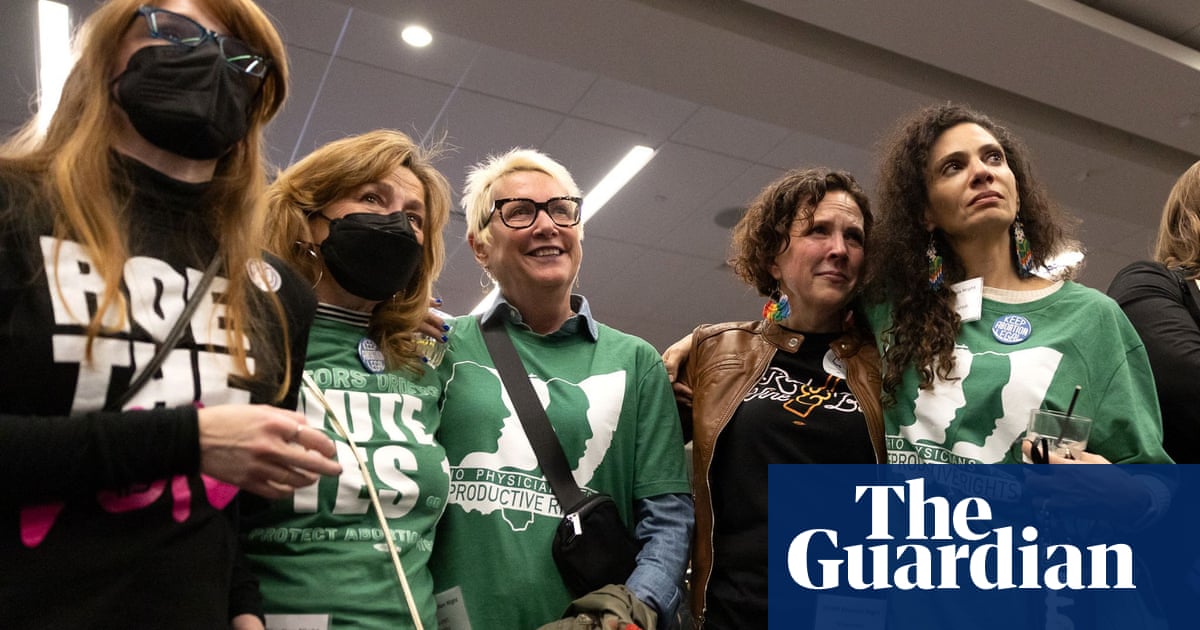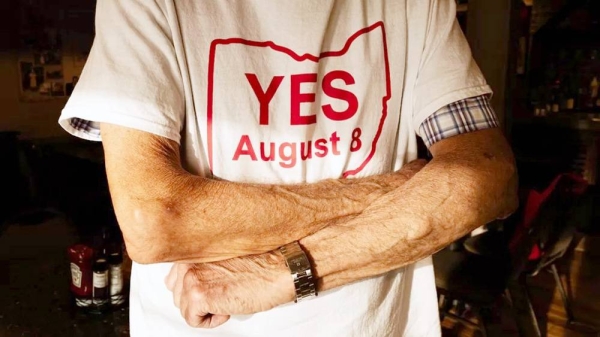
Ohio’s Republican secretary of state quietly canceled the voter registrations of more than 26,000 voters in late September, less than two weeks before the deadline to register to vote in next week’s hotly contested abortion referendum in the state.
Voting rights advocates say the process lacked transparency and departed from Frank LaRose’s usual practice of alerting groups before removing registrations from the rolls. And it comes as LaRose campaigns hard against the 7 November constitutional amendment vote – when Ohio voters will decide whether to enshrine the right to abortion in the state constitution – as well as a vote on a separate measure to legalize marijuana.
“We are disappointed in the secretary of state’s office’s authorization of the voter purge while voting for the November election was already (and still is) under way,” Kayla Griffin, of the voting rights group All Voting is Local, said.
Voter list maintenance is a standard, legally required part of the election process, and many if not most of these registrations are for people who have moved away, died or long since stopped voting. The state issues alerts by mail to voters whose registration is flagged for removal, leaving the chance to update or confirm their registration before being kicked off the rolls.
But it’s unusual to remove voter registrations this close to an election given the risk of disenfranchising people who intend to vote but simply missed the memo that they had been flagged for removal. In fact, if this was a national election rather than a state-level contest, what LaRose’s office has done would have been illegal. The National Voter Registration Act prohibits elections offices from systematically removing voters from the rolls within 90 days of a federal election.
Typically, voter removals in Ohio are scheduled in the summer to afford voters who are affected plenty of time to re-register. This time, the deadline to remove voters from the rolls came on 28 September, nearly a week after military and overseas absentee voting began on 22 September. LaRose had postponed the process before an 8 August special election to change the constitution. But the new date landed smack-dab in the middle of this current election fight.
Voting rights advocates also say the office did not follow its established – although not obligatory – practice of alerting voting rights groups ahead of the purge. The office would typically give “the entire list to groups like ours so that we could, one, make sure the list was accurate and two, contact voters”, said Jen Miller, executive director of Ohio’s League of Women Voters.
“As far as I know, no unit has been reached out to,” said Tom Roberts, the president of the Ohio Conference NAACP and a former Democratic state senator. Instead, Roberts said he found out about the removal of nearly 27,000 voters on 26 October, a month after county offices were required to adjust their voter rolls.
Bride Rose Sweeney, a Democratic state representative, questioned the timing of the voter purge in a 20 October letter to LaRose, writing that “now that our reproductive rights, our very lives, are on the November ballot, you have rushed to purge voters” and asked the secretary of state to “undo this bad decision and restore them to the rolls since voting is already underway for this 7 November election”.
In a response letter, Paul Disantis, the chief legal counsel of the secretary of state, strongly rejected the implication that the timing of the purge was improper, noting that the National Voter Registration Act called for regular list maintenance and argued the purge was “not a choice; it’s longstanding federal law”. To maintain the rolls, elections boards use data from the National Change of Address database; the maintenance is intended to keep information about registered voters up-to-date in the system. “This process is also essential to ensuring the integrity and accuracy of Ohio’s elections,” wrote Disantis.
In an email to the Guardian, a spokesperson for LaRose’s office wrote that the office typically only conducts outreach when removing inactive voters using the state’s supplemental, controversial “use-it-or-lose-it” process which targets voters who have not cast a ballot in two years.
Voting rights groups said that was not accurate – and that LaRose’s past outreach had addressed both kinds of list maintenance. They also pointed out that there was no legal requirement to schedule the purge before the election; the office could have waited until after votes had been cast.
“We’d like to think that when the voter rolls are cleaned up, it’s the folks who’ve moved, it’s the folks who passed away, but unfortunately, other folks end up getting picked up and purged sometimes by accident,” said Catherine Turcer, director of Common Cause Ohio. In 2019, Ohio came close to accidentally removing nearly 18,000 active voters from the rolls; 10,000 of them ended up casting ballots in the 2020 election.
Voter purges also often disproportionately affect voters of color: one study using data from a Wisconsin election found Black voters may be removed from the rolls in error more than twice as often as white voters.
The election is the culmination of a months-long effort by abortion rights groups, including Ohio Physicians for Reproductive Rights and Ohioans for Reproductive Freedom, which introduced language for the ballot initiative in February. It’s the latest in a series of efforts by abortion rights advocates to use statewide referendums to protect access in states where Republican-controlled legislatures pushed to restrict it. They have been largely successful: Voters even in conservative states like Kansas and Montana have passed referendums protecting abortion access.
But Republicans, conservative groups and activists in Ohio, including LaRose, have fought to prevent its passage – and sought to change the rules to make it harder for voters to change the state constitution in the first place. In May, Republicans in the state legislature introduced a bill that threatened to make it much harder to pass a constitutional amendment by requiring more than 60% of the vote to pass an initiative, rather than a simple majority – an effort explicitly designed to undercut the abortion referendum.
LaRose, who is also running for a US Senate seat and is looking to endear himself with conservative voters, was a prominent supporter of that failed campaign.
“This is 100% about keeping a radical pro-abortion amendment out of our constitution,” LaRose said in June. “The left wants to jam it in there this coming November.”
In a special election on 8 August, Ohio voters rejected the proposal by 57% to 43%, a lopsided result in the Republican-leaning state.
LaRose came under fire again in August, when the secretary of state drafted ballot language proponents of the reproductive rights amendment called misleading. Rather than referring to a “fetus”, as the ballot previously had, the new ballot used the term “unborn child”. Polls suggest that the abortion rights referendum is expected to pass by similar margins to which the August referendum was defeated – but that the wording LaRose approved for the ballot could narrow that margin.
In January, Ohio passed a wide-reaching law that restricts voting access by tightening voter ID requirements, allowing less time for voters to return absentee ballots, and reducing the early voting period. In the 8 August election, voting rights groups observed an uptick in rejected ballots and confusion among poll workers who perpetuated misinformation about the new law. Voters whose registrations were removed during the September cleanup of the rolls can cast provisional ballots at their polling place or at the board of elections.
The last-minute removal of more than 26,000 voter registrations and the numerous recent changes to voting requirements, Turcer says, “can become really problematic” for voters.
“All of these little things combined create a situation where there are more obstacles to voters,” she warned.











